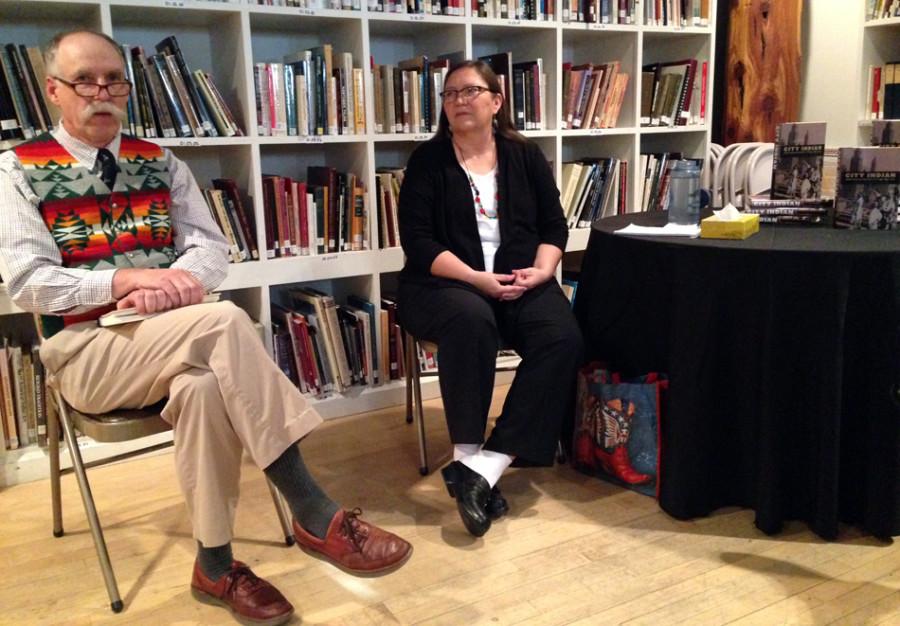Authors discuss history of American Indian activism in Chicago
Michelle Kim/The Daily Northwestern
Authors David Beck and Rosalyn LaPier discuss their book, “City Indian: Native American Activism in Chicago, 1893-1934.” The authors visited the Mitchell Museum of the American Indian on Thursday to talk about how activists organized around Native American issues.
May 21, 2015
Chicago was once the central location for Native American activism, author David Beck said Thursday during his visit to the Mitchell Museum of the American Indian.
Co-authors Beck and Rosalyn LaPier talked about and read excerpts from their book “City Indian: Native American Activism in Chicago, 1893-1934” which focuses on the activism of Native American leaders around issues of representation. The book specifically examines the way activist leaders initiated organization around Native American issues.
“One of the themes of the book became this idea of native people becoming the actors instead of being acted upon,” LaPier said. “Part of what the activist movement tried to do is change America’s idea of Indians.”
Although the population of Native Americans vastly changed during and after World War II, the same issues of representation have persisted, LaPier said. LaPier referenced controversy over the mascot of the Washington Redskins football team to illustrate that the issues have not changed.
“Native people have always been concerned about representation, how they’re represented to the larger community,” LaPier said. “We want a say in that representation.”
Part of the demands made by Native Americans in the early 20th century pertained to changes in the education system regarding their part in American history, LaPier said. She said the issue of figuring out how to represent Native Americans is relevant to how the contents of the Chicago public school curriculum are decided today.
“In terms of providing education about Native Indians to the rest of the school population — it just hasn’t happened yet,” Beck told The Daily. “Students in Chicago schools aren’t taught about American Indians in a contemporary context … and it’s a nationwide problem.”
The authors also discussed how media coverage of Native Americans has decreased since the early 20th century. During that time, most of the Native Americans migrating to Chicago were arriving with a boarding school education and had strong connections with politicians, LaPier said. Many of the activists covered in the book formed an elite native community whose members used their privilege and contacts to advance the movement, the authors said.
Since then, there has been a lack of funding and resources going to urban Native American communities, with 80 percent of American Indians in the nation living outside of reservations, Beck said.
“(Native American activists of 20th century) became prominent and politicians thought it was cool to know an American Indian,” said Dr. Dorene Wiese, president of the American Indian Association of Illinois. “But, we don’t have any rich or famous people in Chicago. There’s no one to press our issues forward.”
Email: [email protected]
Twitter: @yeareeka


